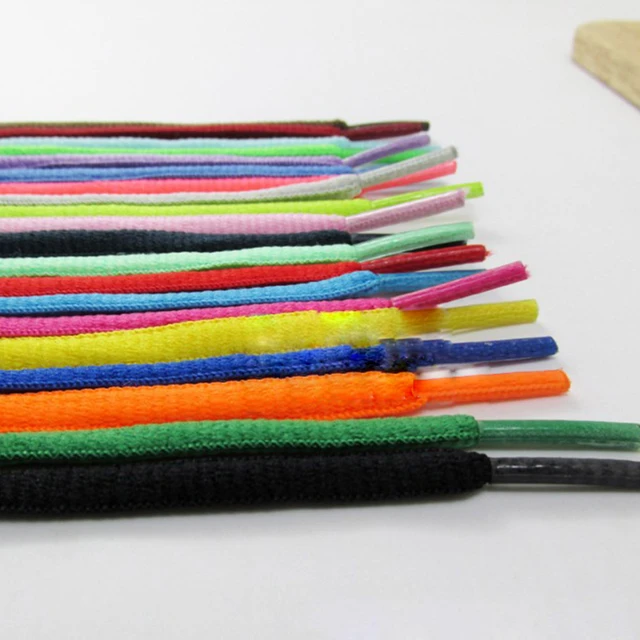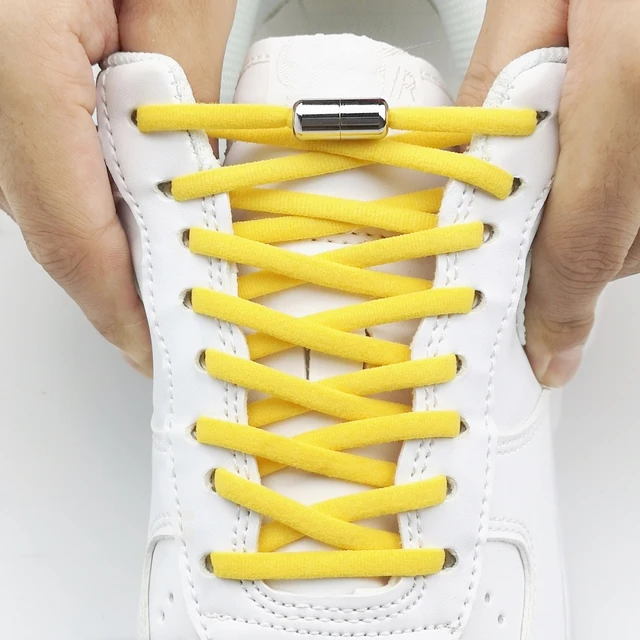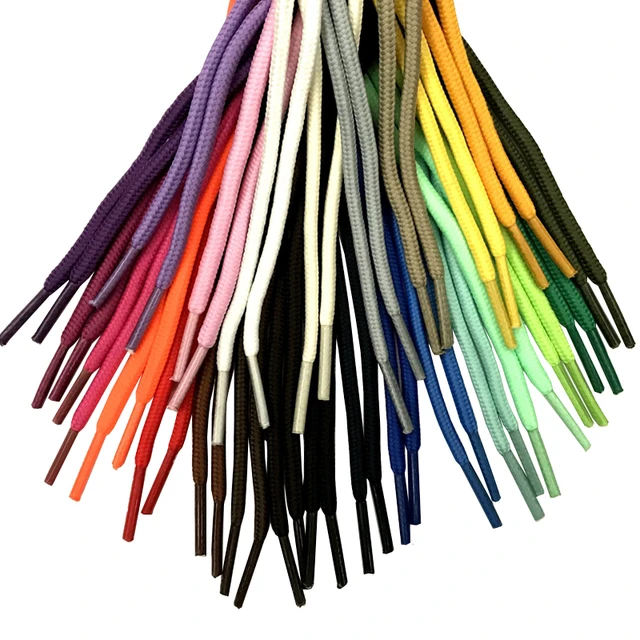Few things are as annoying as constantly having to retie your shoelaces. Whether you’re walking, running, or simply going about your day, untied shoelaces can be a persistent nuisance. They not only interrupt your activities but also pose a safety hazard by increasing the risk of tripping. Curious about effective ways to prevent this inconvenience? Read on to explore a variety of methods and solutions that address the common issue of untied shoelaces.
Understanding the Basics
Before tackling the issue, it helps to understand why shoelaces come untied in the first place. Typically, this happens due to the knots slipping gradually as a result of regular movement. The standard “bunny ears” knot, although commonly taught, often lacks the necessary tension to stay tied under continuous movement. Furthermore, the type of lace material and the shoe’s eyelet design can also contribute to this persistent problem.
For instance, round laces tend to come untied more easily than flat laces due to their shape and surface friction. Similarly, eyelets that are particularly smooth or positioned in a straight line rather than a staggered pattern can allow laces to loosen more readily.
Improved Knot Techniques
The simplest way to tackle untied shoelaces is to upgrade your knot-tying technique. Two main alternatives to the common bow knot can offer a more secure solution.
- Ian Knot: Known as the world’s fastest shoelace knot, the Ian Knot is both quick to tie and extremely secure. By forming two loops and pulling them through each other, this method creates a balanced knot that stays tight longer.
- Surgeon’s Knot: Similar to the standard knot but with an additional loop, the surgeon’s knot significantly increases hold strength. To tie this knot, make a loop, twist it an extra time, and then pull the lace through. Finish as you normally would, ensuring the loops are tight.
Testing different knot techniques and practicing them until they become second nature can significantly reduce the frequency of untied shoelaces.
Lace Anchors
Lace anchors offer a modern solution to untied shoelaces by securing the lace ends inside the shoe, eliminating the need for knots altogether. These small devices fasten to the inside of your shoes, keeping the laces firmly in place.
- Installation: To use lace anchors, thread your shoelaces through them before lacing your shoes. Secure them at the desired tightness, then tuck any excess lace inside your shoes.
- Benefits: This method allows for easy slip-on wear and avoids the hassle of continually tying and untying laces. Lace anchors are particularly useful for children or individuals with motor difficulties.
While lace anchors can be a bit more expensive than traditional methods, their convenience justifies the cost for many users.
Elastic Shoelaces
Another innovative solution to untied shoelaces is switching to elastic laces, which convert any lace-up shoe into a slip-on. Elastic laces stretch as you put your shoes on and off, then contract to keep the shoes securely on your feet.
- Ease of Use: Elastic laces eliminate the need for tying, making them ideal for athletic shoes, casual wear, and kids’ shoes.
- Variety: Available in a wide range of colors and styles, elastic laces can match or complement any shoe design.
By replacing traditional shoelaces with elastic ones, you can enjoy the benefit of secure, comfortable footwear without the recurring issue of untied laces.
Double Knotting
For those who prefer sticking with traditional laces, simply double knotting your shoelaces can provide an extra level of security. Although this method is straightforward, it’s surprisingly effective at minimizing untied shoelaces.
- Tie Once, Then Repeat: After tying the initial bow, create another knot by looping the bow loops through each other. This additional step adds friction and helps keep the knot tight.
- Periodic Checks: While double knotting offers more stability, it’s still wise to periodically check and adjust your laces, especially during high-intensity activities.
Double knotting requires minimal effort, making it an accessible solution for anyone experiencing frequent untied shoelaces.
Shoelace Toppers
Shoelace toppers are small accessories that lock the laces in place, effectively preventing them from coming untied. These can be especially useful for runners or athletes who need their laces to stay secure under rigorous conditions.
- Simple Mechanism: Typically, these devices clip onto the laces, holding them in place once tied. This prevents the laces from loosening or untying during movement.
- Convenience: They are easy to apply and remove, making them a convenient option for anyone looking to secure their shoelaces.
Shoelace toppers offer a practical, no-fuss solution for maintaining tight laces throughout the day.
Choosing the Right Laces
The type of shoelace you use can greatly affect how often they come untied. Understanding the difference between various materials and designs can help you make better choices and reduce untied shoelaces.
- Flat vs. Round Laces: Flat laces tend to stay tied better than round laces due to increased surface area and friction. If your round laces frequently come untied, consider switching to flat laces.
- Material Matters: Shoelaces made from synthetic materials like polyester or nylon generally hold knots better than those made from cotton or other natural fibers.
- Lace Thickness: Thicker laces are less likely to slip and come untied compared to thinner laces. If your current laces are thin, consider opting for a thicker alternative.
Paying attention to these factors can provide a more consistent and secure tie, preventing the need for frequent reties.
Custom Lacing Patterns
Adjusting the lacing pattern of your shoes can also help mitigate the problem of untied shoelaces. Using alternative lacing techniques can distribute tension more evenly and hold the laces more securely.
- Criss-Cross Lacing: The standard criss-cross lacing pattern might be the most popular, but experimenting with patterns like straight bar lacing or ladder lacing can reduce slippage.
- Loop Lacing: Creating extra loops at the top of your shoes can provide additional tension, holding the laces more firmly in place.
- Lock Lacing: Also known as the “runner’s loop,” this technique involves threading the lace ends back through the last eyelets to create loops, then crossing the ends through the opposite loops before tying. This creates a tighter hold with less chance of loosening.
Experimenting with various patterns can lead to a significant improvement in how well your shoelaces stay tied.
Periodic Tightening
Incorporating periodic tightening into your routine can prevent your laces from coming loose throughout the day, offering another simple yet effective solution to untied shoelaces.
- Mid-Day Check: Make it a habit to check and tighten your shoelaces periodically. This practice helps maintain consistent tension and can prevent unexpected untying.
- Before Activities: Anytime you’re about to engage in physical activities, take a moment to tighten your laces. This preemptive measure can save you from having to stop to retie your shoes.
Regular maintenance and awareness of your shoelace tension can reduce the likelihood of untied laces.
Professional Advice
Seeking advice from footwear professionals can offer insights you might not consider on your own. Experts can recommend specific products or techniques tailored to your needs, further addressing the challenge of untied shoelaces.
- Shoe Stores: Visit specialized shoe stores where knowledgeable staff can advise you on the best laces and tying techniques based on your shoe type and activity level.
- Running Clinics: Many athletic stores offer running clinics that include information on proper shoe lacing techniques to prevent untied laces during runs.
Utilizing professional advice can provide specialized solutions and effective advice that’s custom-tailored to your unique requirements.
 Technological Innovations
Technological Innovations
Recent innovations in shoelace designs include various high-tech solutions aimed at permanently solving the issue of untied shoelaces.
- Self-Tightening Laces: Technology now offers self-tightening laces that adjust automatically to maintain the ideal tension. Brands like Nike have developed self-lacing shoes that ensure your sneakers are always snug and secure.
- Magnetic Closures: Magnetic shoelace closures snap together, offering a secure and easy-to-use alternative to traditional laces. They’re perfect for people looking for a quick and effective solution.
Exploring these high-tech alternatives can provide long-term solutions to the frustrating problem of untied shoelaces.
Children’s Shoelaces
For parents, dealing with children’s untied shoelaces can be particularly challenging. Finding effective solutions tailored to kids’ shoes is essential to keep them safe and active.
- Elastic Laces: Just like for adults, elastic laces are excellent for children. They convert any shoe into a slip-on, making it easier for kids to manage their footwear.
- Velcro Straps: Shoes with Velcro instead of laces can be a lifesaver for parents. They’re quick to fasten and eliminate the risk of untied laces altogether.
By opting for child-friendly alternatives, you can ensure your kids remain safe and their shoes stay securely fastened.
Conclusion
So, how can you solve the problem of untied shoelaces? A combination of improved knot techniques, innovative products like lace anchors and elastic laces, and mindful practices like periodic tightening can significantly reduce this everyday annoyance. Whether you prefer traditional methods, modern solutions, or high-tech innovations, there are numerous ways to keep your shoelaces securely tied. By understanding the underlying causes and exploring various solutions, you can choose the method that best suits your lifestyle and footwear needs. Adopting these practices ensures that untied shoelaces become a rare nuisance rather than a frequent frustration.

